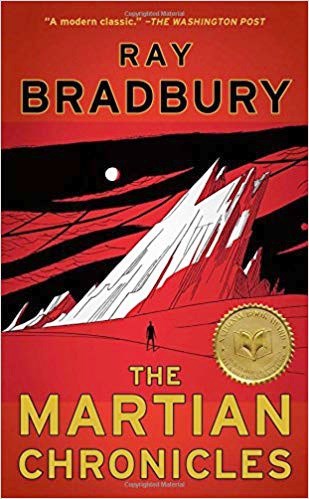The “fascinating tales of a strange tomorrow” blurb on cover of the original 1950 edition of Isaac Asimov’s book, I, Robot, could be taken as a credo for what has been called the Golden Age of Science Fiction.
One of the perennial classics from that era is Ray Bradbury’s Martian Chronicles, which features a series of linked stories outlining the colonization of Mars by humans, the subsequent near extinction of the Martians by chickenpox brought by the original colonists, and how the devastation of Earth by nuclear war turns those colonists into the new Martians.
Unlike many of his “hard” science fiction compatriots, Bradbury was less interested in details like how his colonists breathe the Martian atmosphere than with the interaction of people, governments and corporations as well as issues such as racism, violence, greed and censorship that so often mark these relationships. He is famous for dealing with these difficult topics in a lyrical and philosophical manner.
Asimov was one of the pre-eminent “hard” science fiction authors, which is only fitting for a man who was also a professor of biochemistry. One of his most popular and influential works was Foundation, the first book in the series of the same name. As the great Galactic Empire enters a slow decline, the Foundation is created to preserve humanity’s scientific understanding though the dark ages that some see coming. To protect the Foundation’s advanced technology from the local warlords breaking away from the dying empire, they cloak it as a new religion, which allows them to subjugate their corrupt neighbours.
Another “hard” science fiction author of the period was Arthur C. Clarke. I suggest you start with his first successful novel, Childhood’s End. As the U.S. and the Soviet Union battle to see who is first able to launch a military spacecraft into orbit, the huge silver spaceships of the Overlords suddenly appear over Earth’s major cities. The Overlords announce they have come to save humanity from extinction, which they do by forbidding man’s expansion into space and by setting up a single world government that they control. They also say they won’t let anyone see them until 50 years have passed, and some humans who feel the golden age the Overlords usher in isn’t worth being confined to the planet wonder what the Overlords are hiding. What they are hiding is a shock but they truly are the midwives to humanity’s ascent to adulthood that they claim to be.
The Stars My Destination by Alfred Bester, while somewhat tongue-in-cheek, is sometimes seen as prototype for the dark cyberpunk science fiction that started to emerge some 30 years after the novel was first serialized. As in stories by William Gibson and his peers, the novel is notable for its characterization of unaccountable, soulless corporations driven only by profit and with power equal or greater to the governments of the day. We meet Gully Foyle, the uneducated and shiftless protagonist as he has just been marooned in space, the lone survivor of an attack on his merchant spaceship. His previously unmotivated life becomes filled with an overwhelming thirst for revenge when a passing ship ignores his distress signal and continues by without rescuing him. He survives and, with the help of a secret treasure, re-makes himself as a lurid aristocrat in the cause of hunting down and killing the crew of the ship that left him to die.
Check out other views of our “strange tomorrow” at your local library.
A Good Read is a column by Tri-City librarians that is published on Wednesdays. Michael DeKoven works at Port Moody Public Library



